Spotting the Big Five On a Safari in South Africa
Every visitor to South Africa hopes to catch a glimpse of the ‘Big Five’ – the elephant, lion, leopard, rhinoceros and African buffalo, also known as the Cape Buffalo. These 5 animals are known to be dangerous and considered extremely difficult to hunt down.
Read: Going on a Safari in South Africa
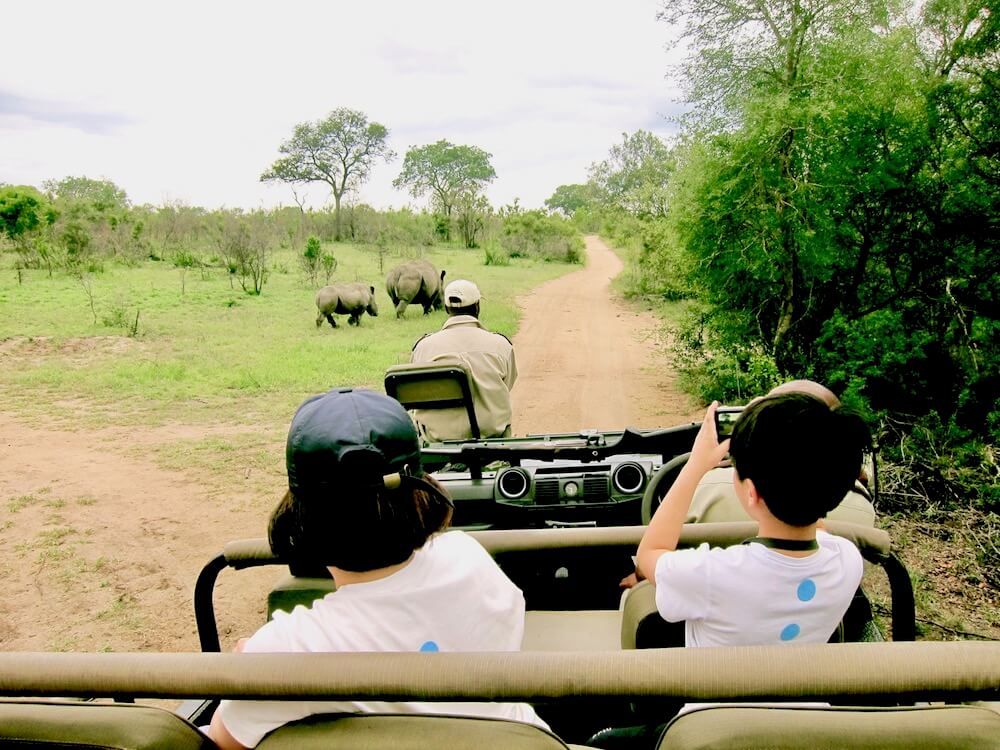
Now, with multiple poaching laws in place, these animals are thankfully mostly under protection. However, the name stuck, making these animals prized sights on safaris. However, nothing is guaranteed, making the search all the more exciting!
For a more enriching experience, here are some facts about the Big Five to learn before embarking on your adventure:
Elephants
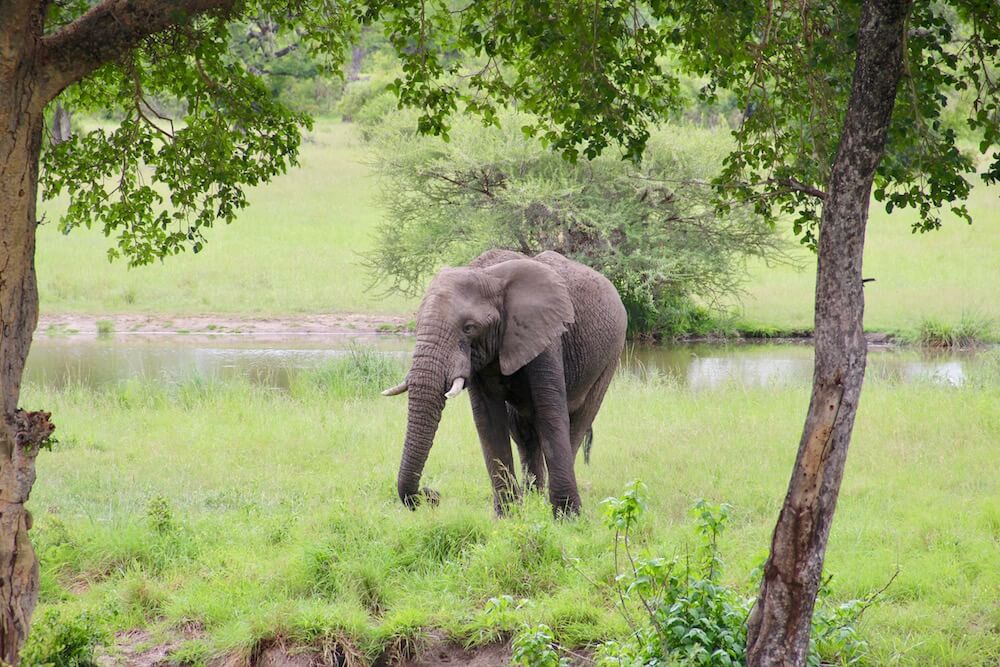
Growing up to 4 metres tall and weighing up to 5, 000 kilograms, these gentle giants are quite a sight to behold. Using their ears to visually communicate with each other, elephants can roam great distances in search of water. Elephants are said to have memories that span many years, allowing them return to watering holes that they’ve discovered in the past.
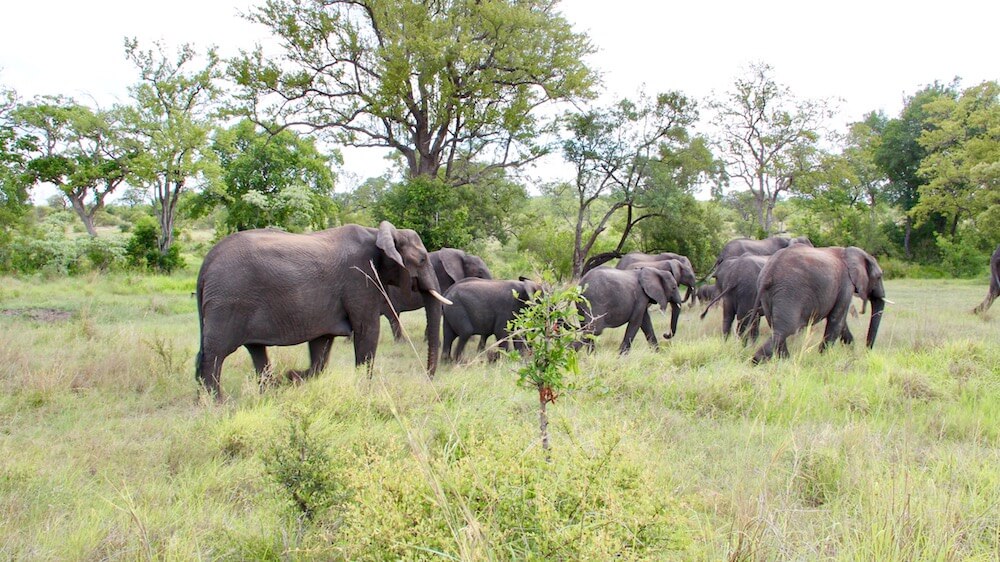
Female elephants spend all their lives living in herds, the size of which can range from 8 to 100. These herds are led by matriarchs, which are the oldest – and supposedly the wisest – in the group.
Male elephants, on the other hand, leave their herds at the tender age of 13 and often leave solitary lives. They do tend to join other male elephants from time to time, leaving as when they wish in search of mates.
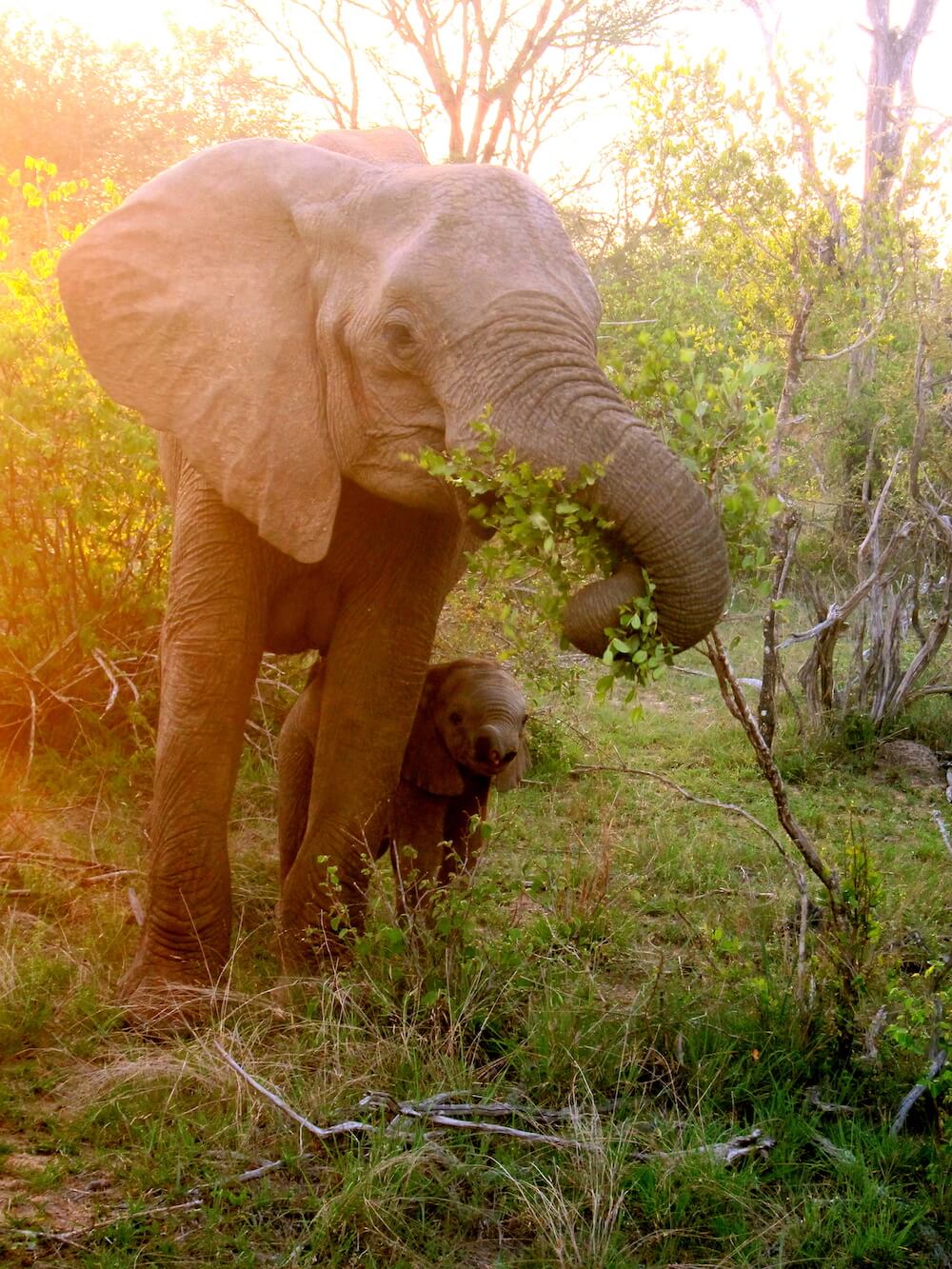
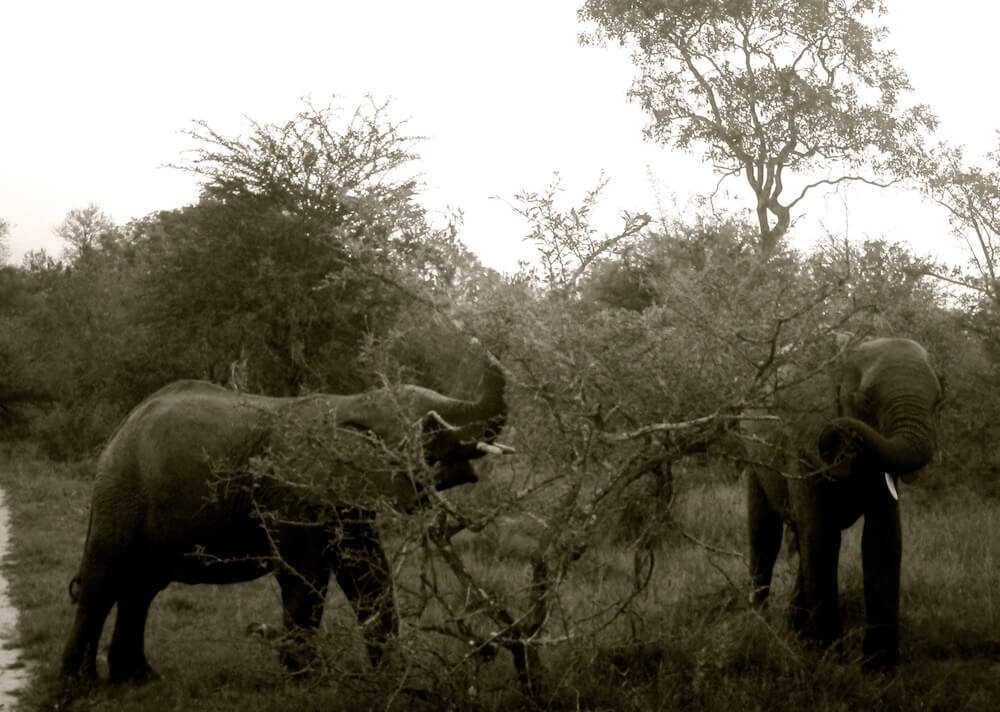
If you’re lucky, you might even meet a little baby calf! Any calves in the herd are cared for by all the females in the herd.
Fun fact: female elephants have the longest gestation period of all mammals, measuring at a total of 22 months.

Watch in awe as they pull leaves from shrubs, play with their trunks or amble across the road in front of you.

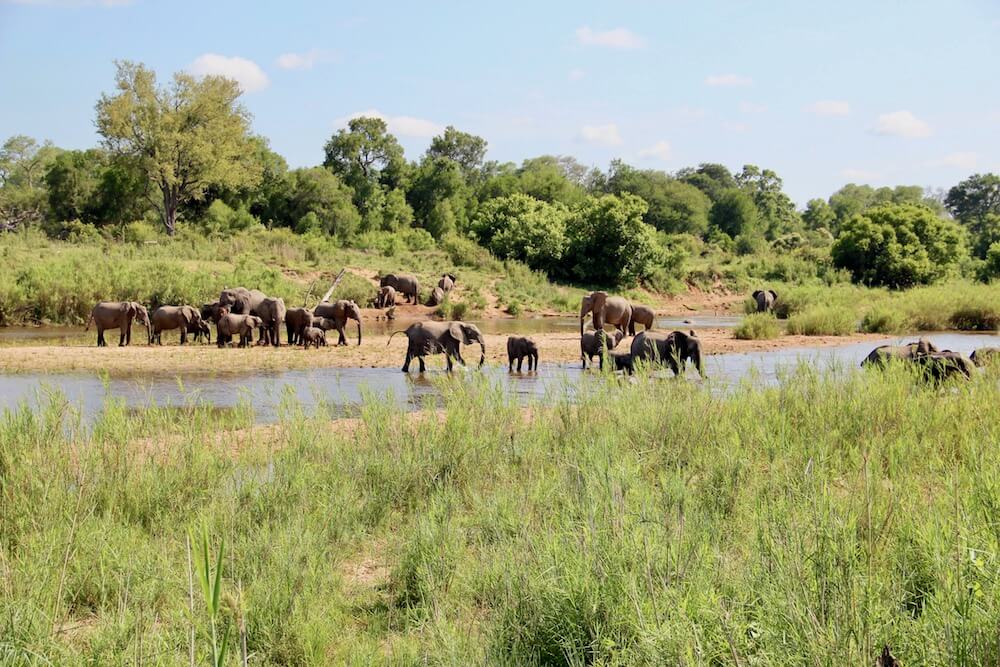
One of my favourite memories was chancing upon a river where a herd of elephants was taking their bath. It was quite a sight to watch the creatures trumpeting as they used their trunks to spray water at themselves. The little calves had a good time splashing around in the water as well!
Lions
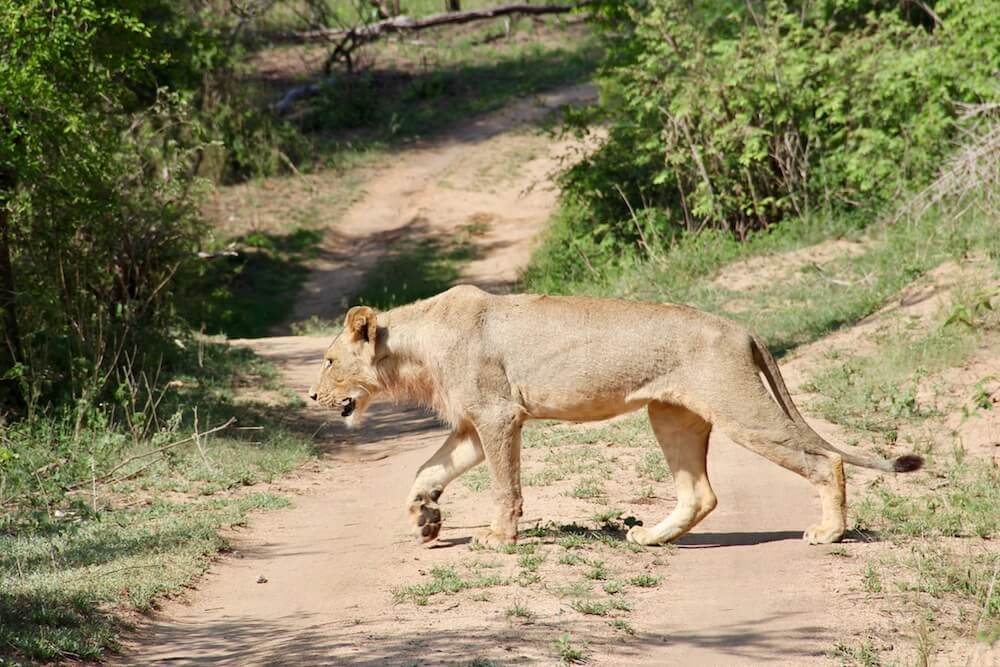
The second-largest cat in the world, the lion is one animal that isn’t to be underestimated. Its roar, for example, can be heard from a whopping 8 kilometres away!
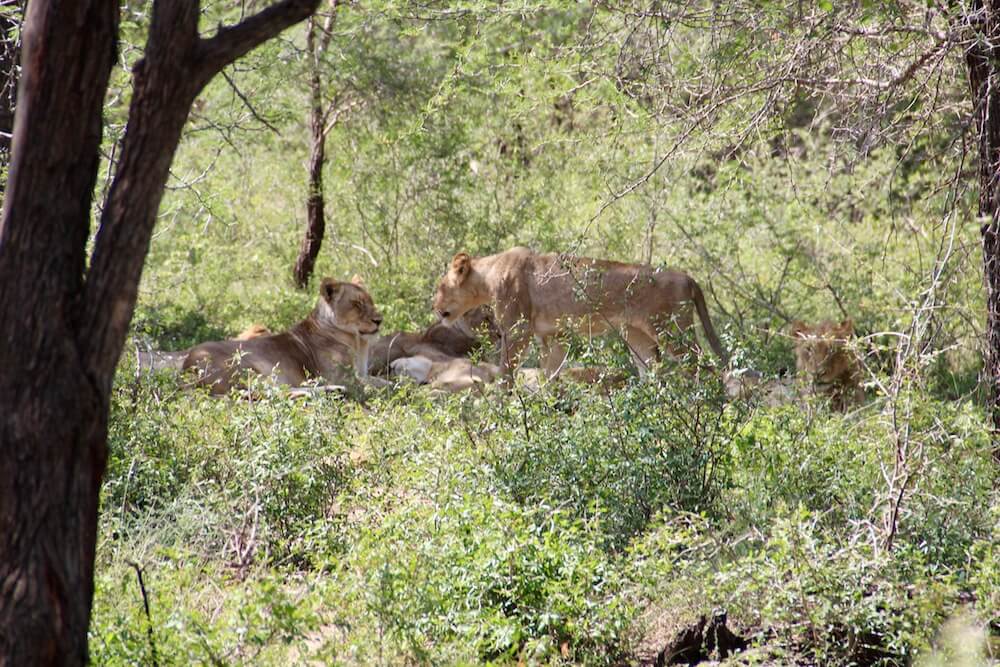
Lions live in groups called prides, which contain significantly more females than males. Male lions take on the role of security, marking their territory with urine and their roar. The female lions, on the other hand, are in charge of procuring food for the group. Females hunt in packs, using teamwork to surround and kill their prey.
Once a prey has been successfully caught, the catch is shared by all the lions in the pack. Males take the first bite, followed by the females and their cubs.
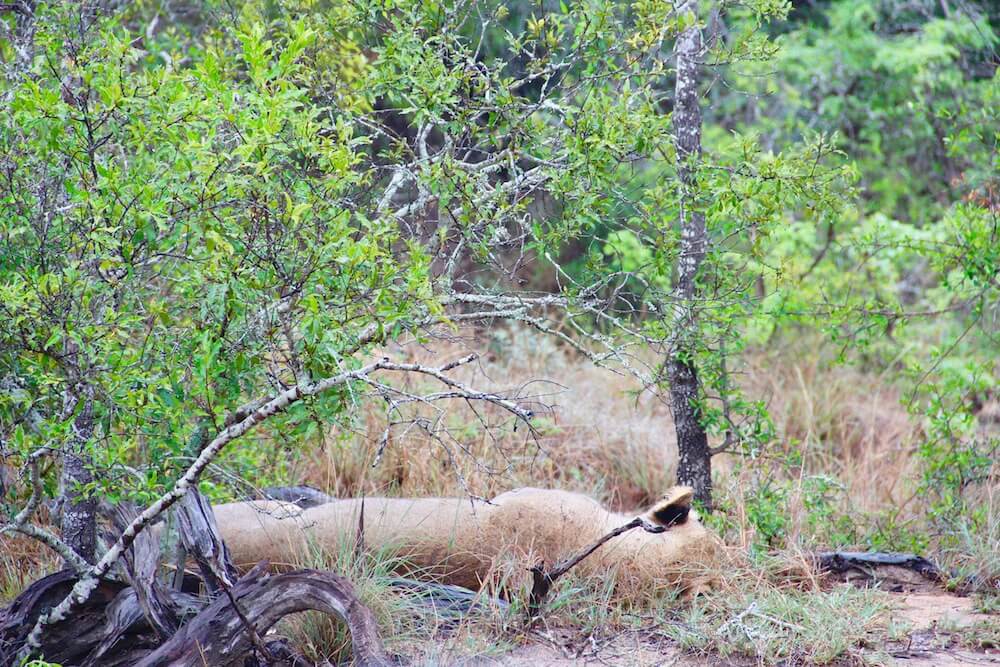

Lions spend up to 20 hours of the day resting. It takes quite the trained eye to spot their tan fur amongst the shrubs!
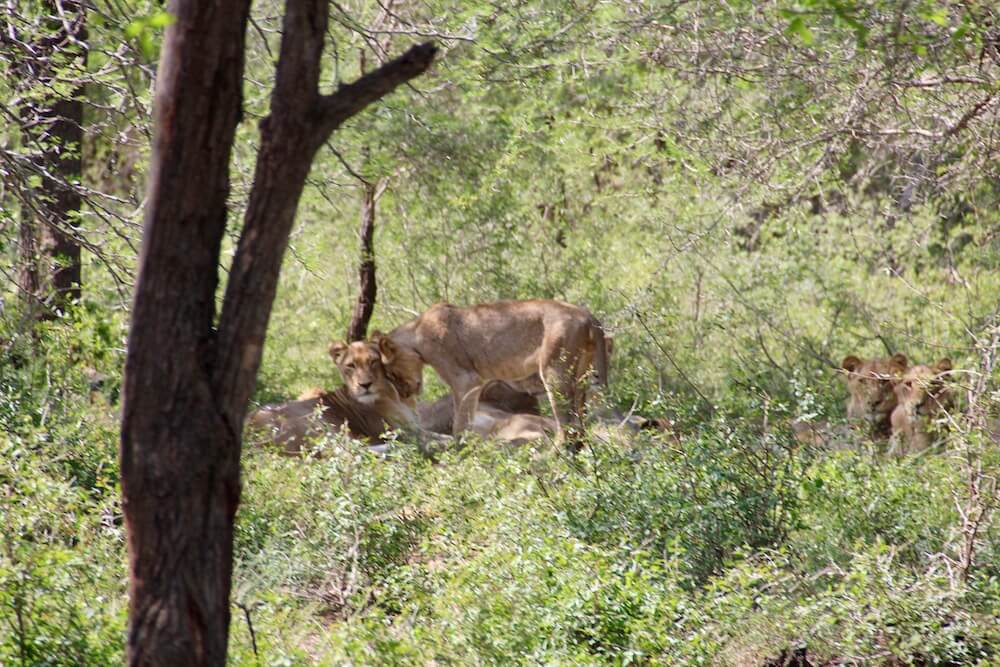
Lions are quite affectionate as well, and are often seen rubbing heads or purring.
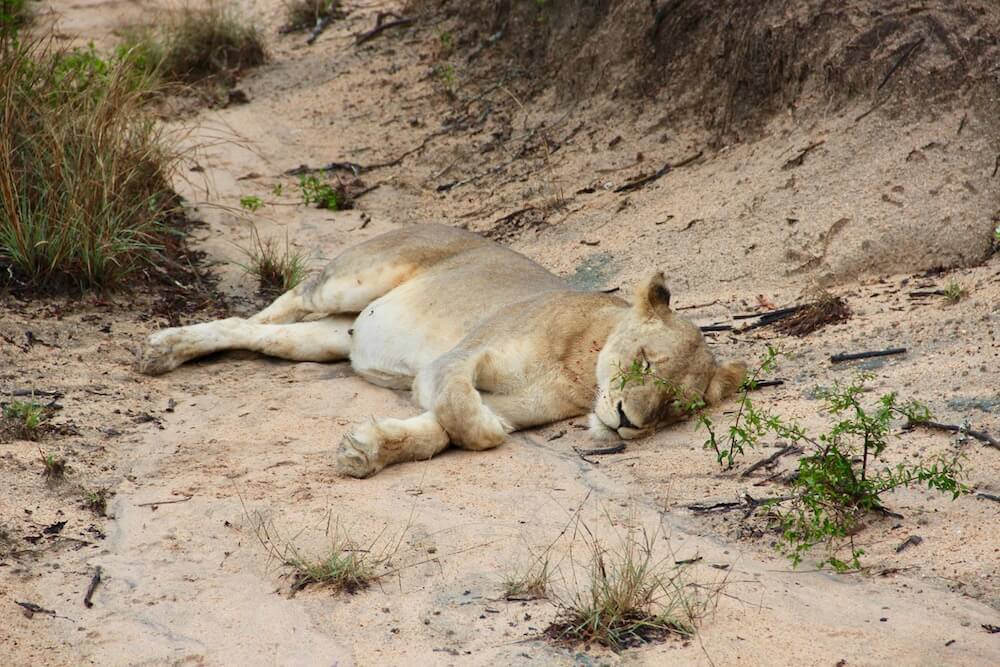
Satiated from a heavy meal, it was somewhat comforting to watch this lion sleeping peacefully in the middle of the road. However, the impala that fell prey to the lion probably didn’t feel the same way!
Leopards
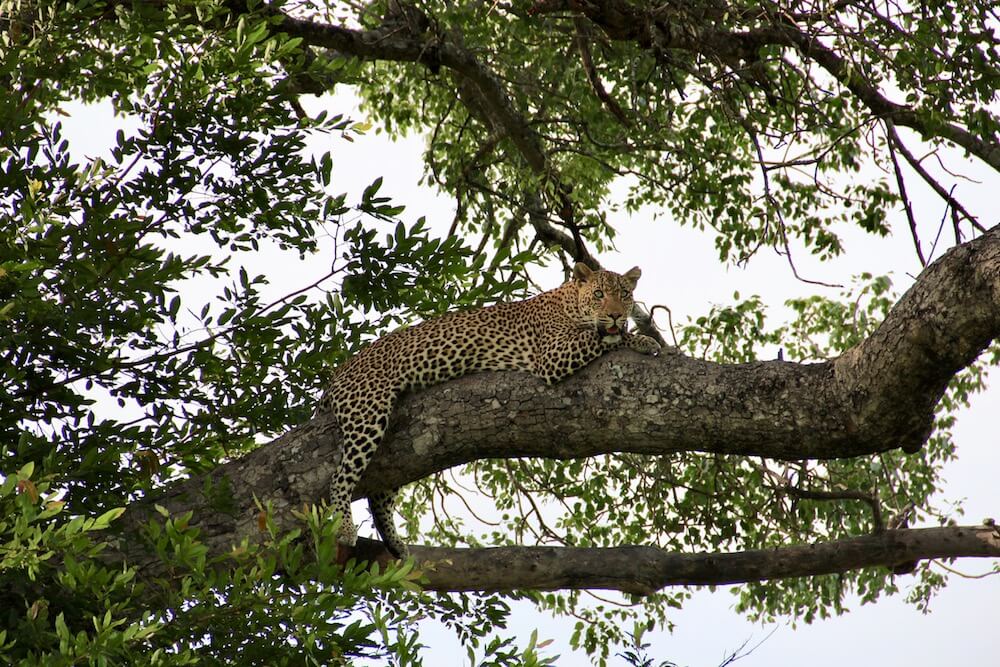

The strongest of the big cats, leopards are often found high up in trees. Can you spot the animal in the second picture?
Leopards are generally solitary animals that claim large territories by marking with urine or their claws. They can run at a speed of up to 58 kilometres per hour and are known to be strong swimmers. The creatures stalk their prey in a low crouched stance, before pouncing on it. After a successful hunt, they usually carry their prey up a tree, where they’ll eat and rest.
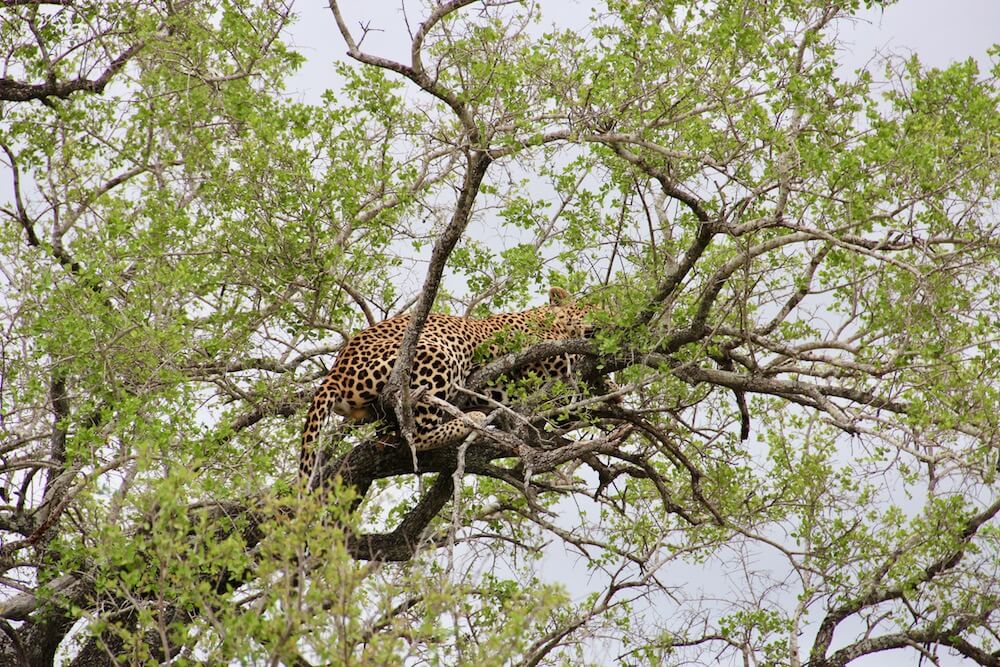
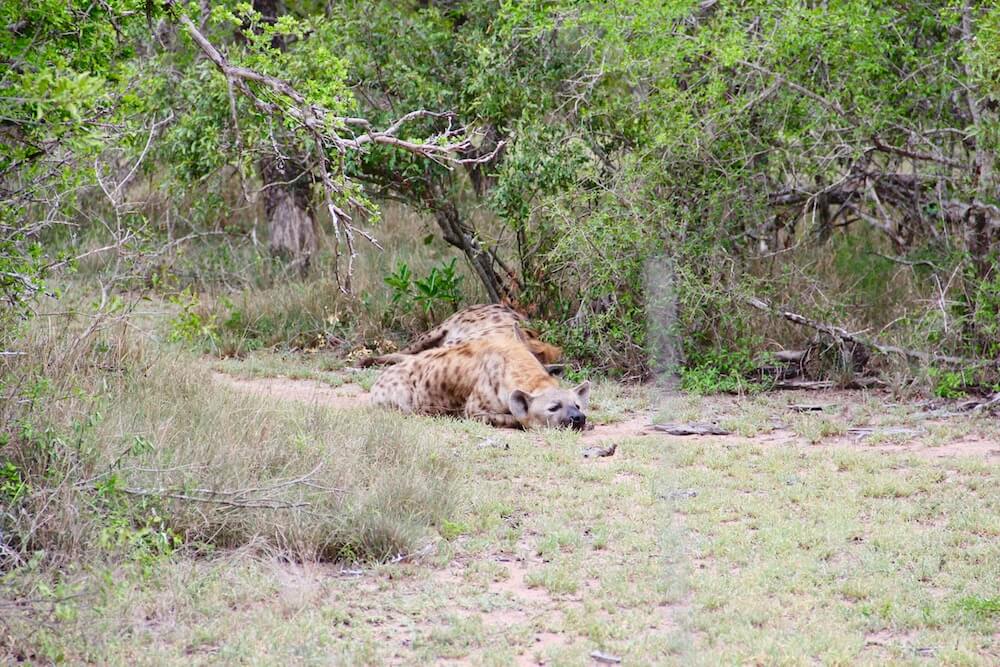
The reason why they carry their prey up the trees is to prevent scavengers like hyenas – or even other predators like lions – from stealing it. I came across a leopard sitting on a killed impala high up in a tree, with a couple of hyenas lying in wait at the bottom of the tree – probably in hope that the leopard would drop pieces of meat as it feasted. What a sight!
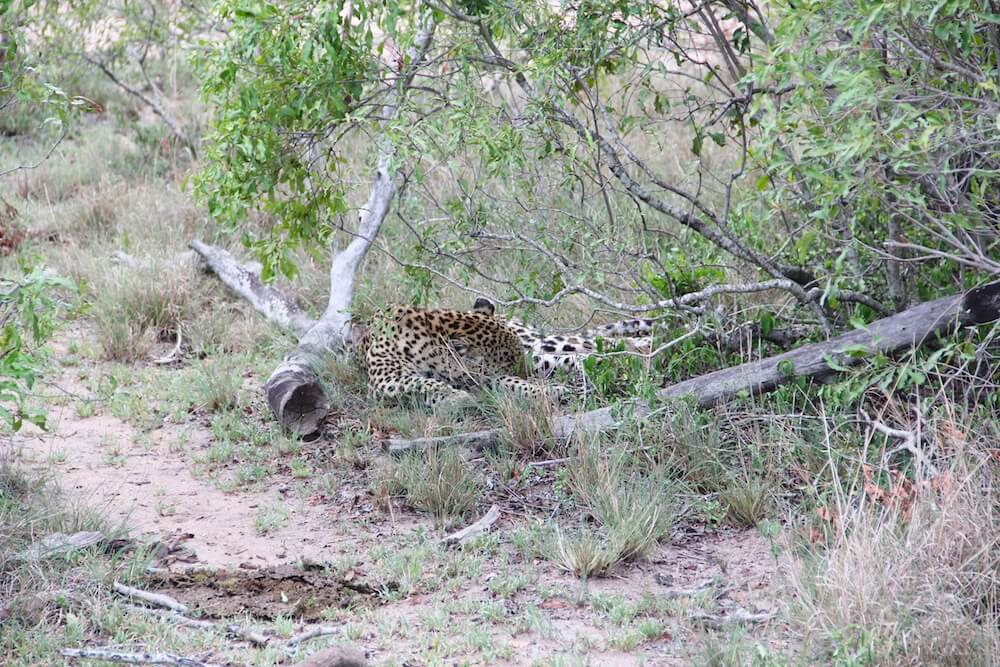
That being said, leopards that aren’t guarding any trophies from their hunts are often found lounging in the shade as well.
Rhinoceros
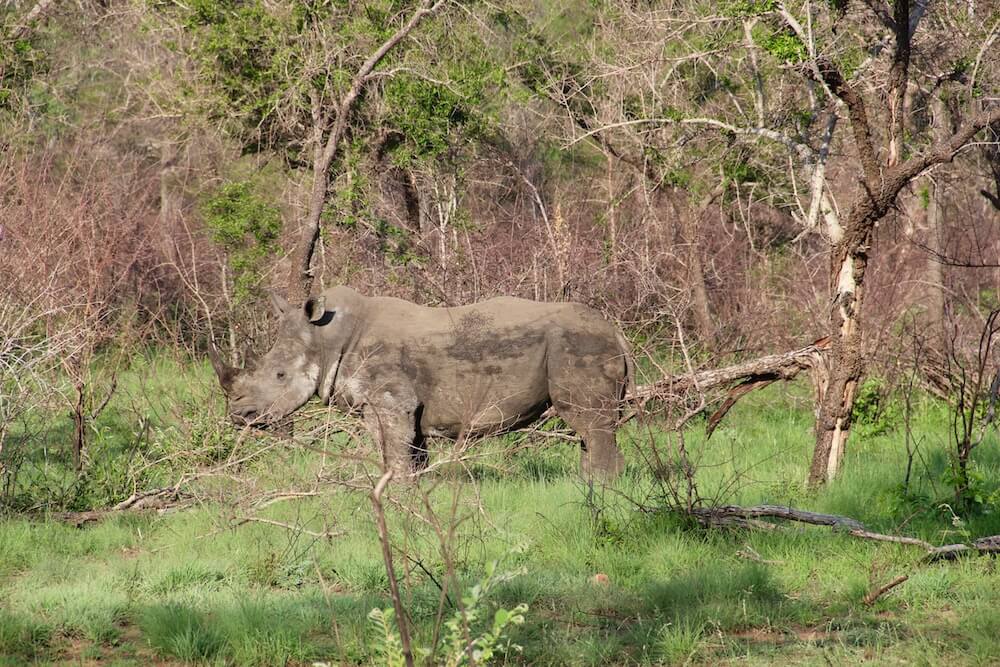
There are 2 species of African rhinoceros – the white rhino and black rhino. These animals unfortunately have very poor vision, which is more than compensated for with their acute senses of smell and hearing.
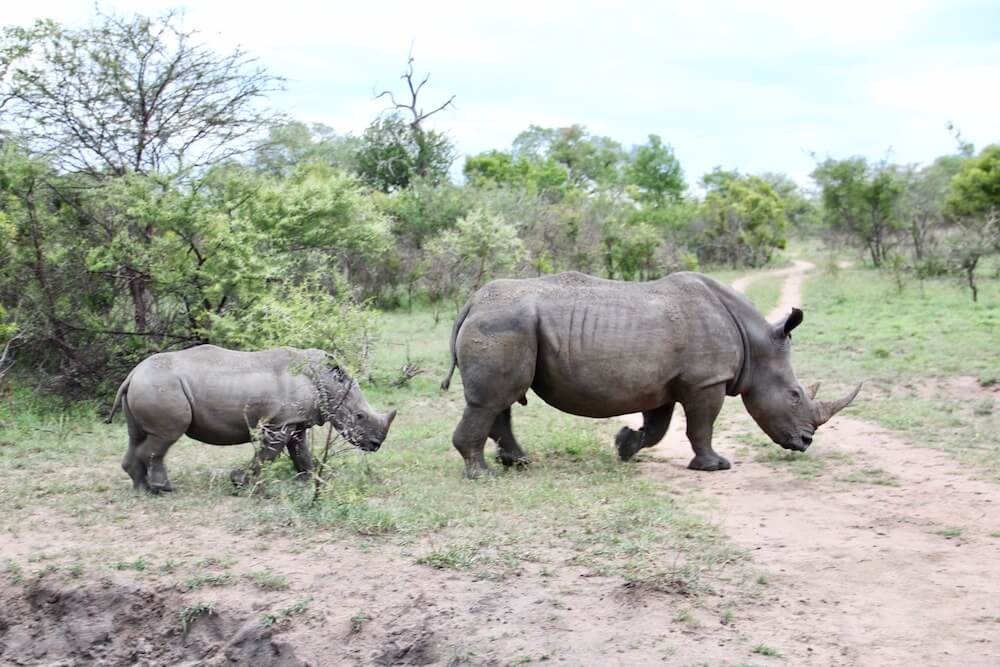
I was lucky to come across a rhino calf and his/her mother. Aren't they cute!
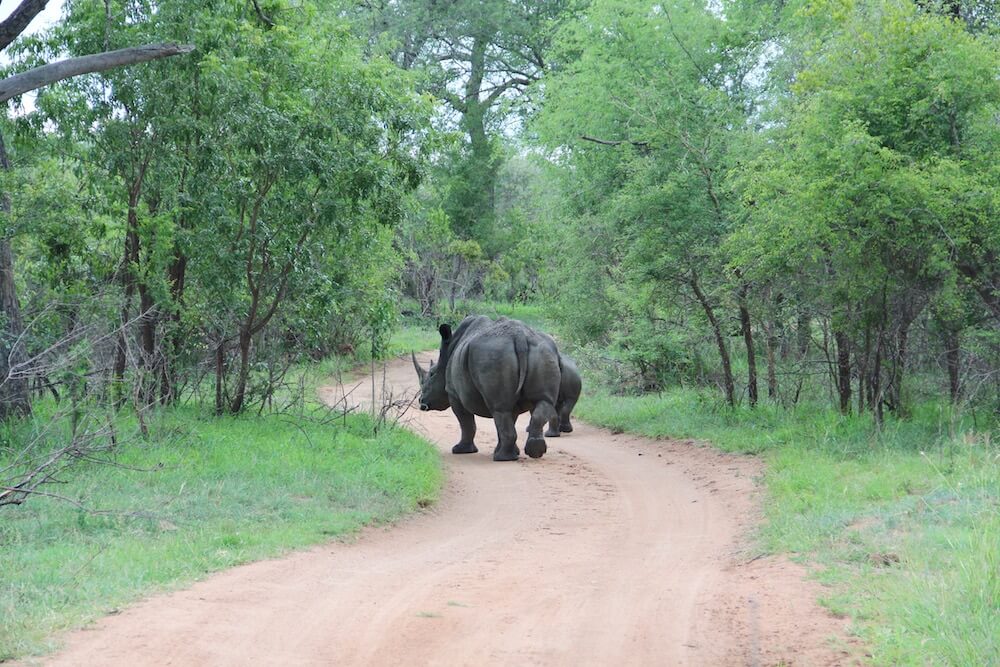
Unfortunately, the rhino is the most endangered out of the Big Five. A high level of rhino poaching is driven by the desire for its horn, which is used in traditional Asian medicine as a popular cure for many illnesses. In Vietnam, the consumption of rhino horn is also seen as a symbol of status and wealth. Poaching is now a sophisticated process, with poachers using poison, crossbows and even helicopters to capture these rhinos. Poachers have also started using veterinary drugs to knock the rhinos out before capturing them. As such, very few African rhinos exist outside non-protected areas.
African Buffaloes
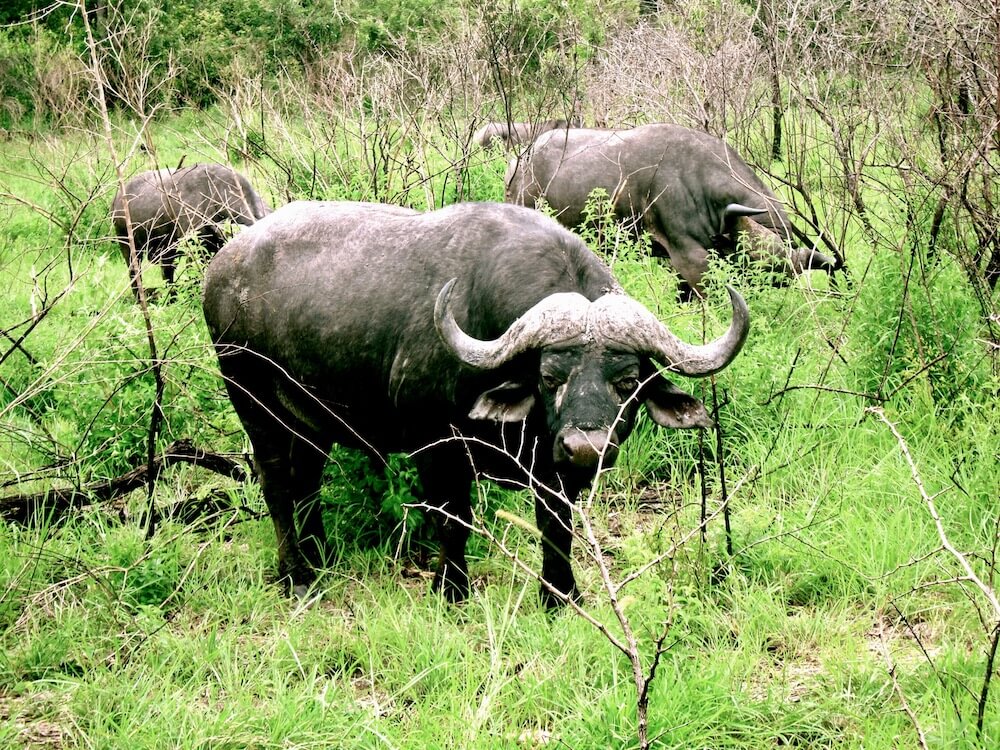
With a distinctive horn shape, the African Buffalo is hard to miss. These buffaloes are often referred to as ‘black death’ as they’re highly dangerous and can even run up to 60 kilometres an hour!
There have been various instances of hunters being killed by these creatures – for example, in 2018, a South African hunter was impaled by a buffalo after he shot and killed another of the herd.
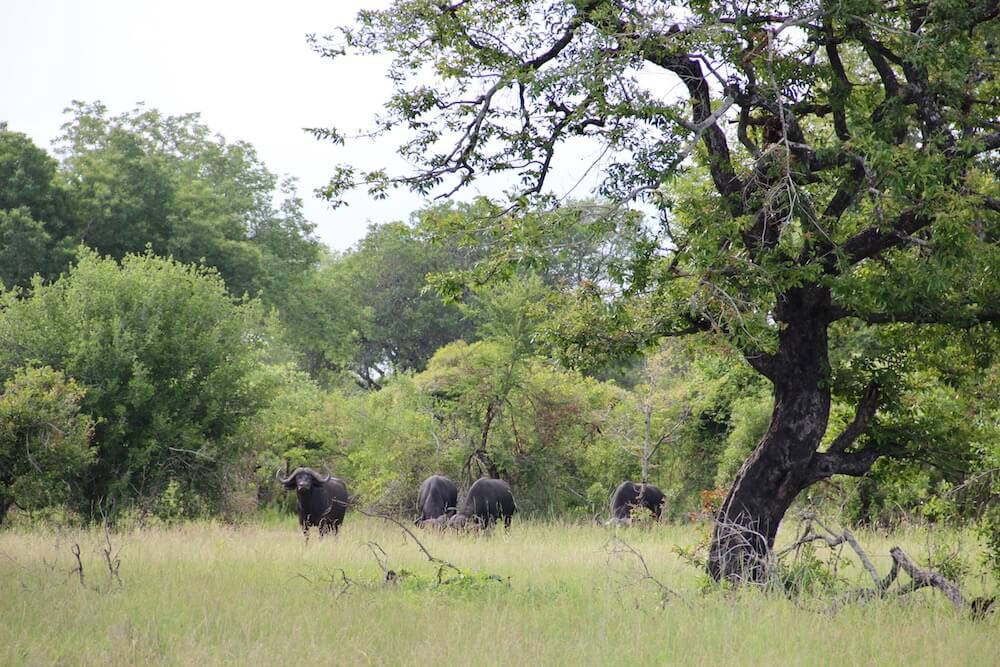
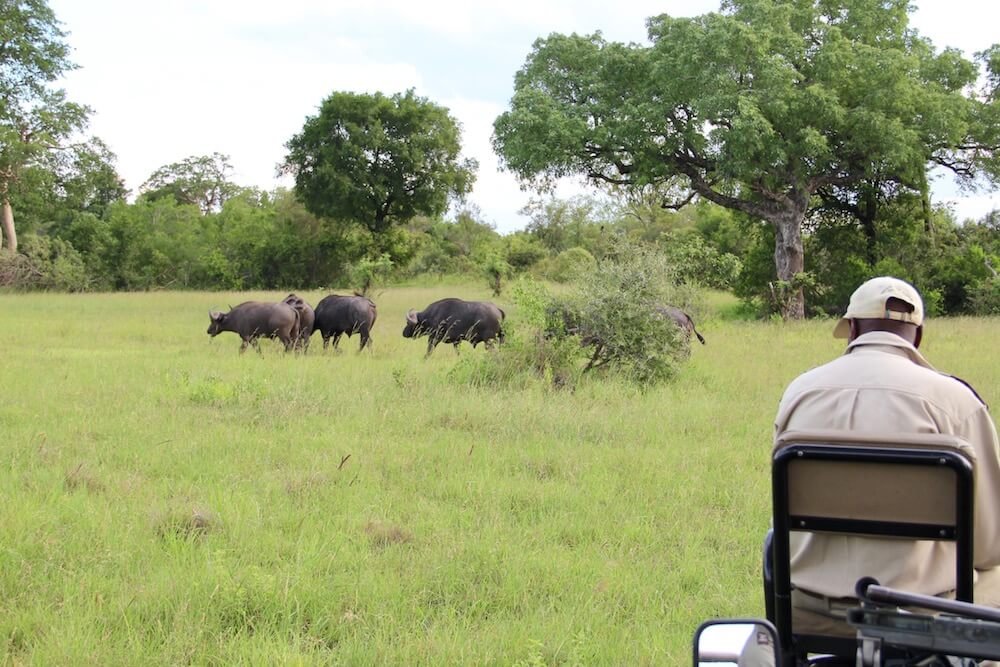
These buffaloes spend most of their lives living in herds of 50 to 100 creatures. This strength in numbers helps in deterring potential predators from attacking them; when they are attacked, however, they often band together as a group and try their best to save any member that has been caught. There has even been an instance where the herd of buffaloes managed to kill a lion after it killed one of the group!
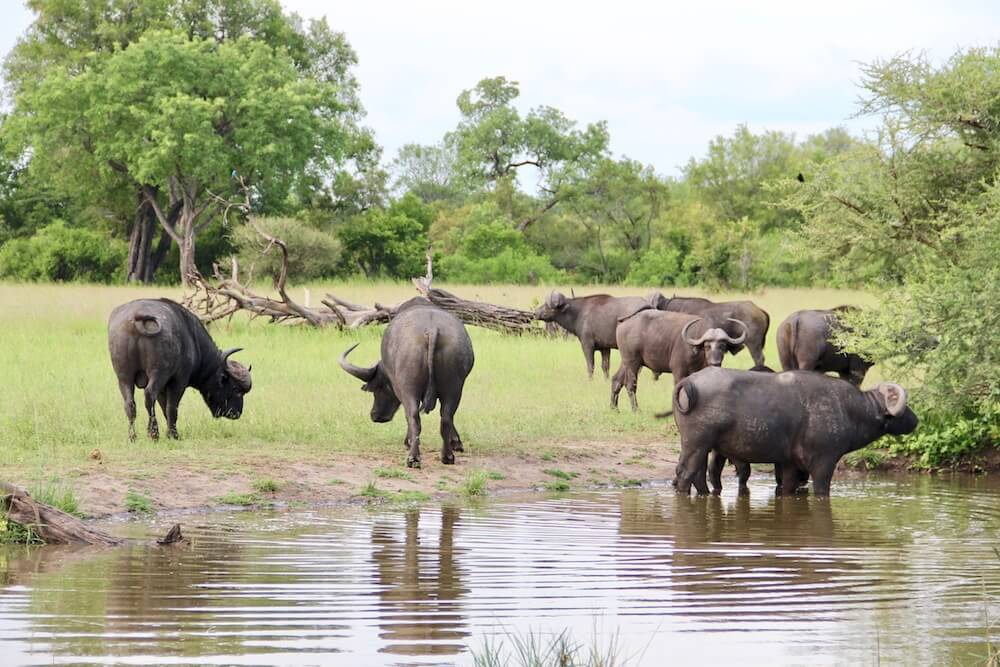
I encountered a large herd of buffaloes drinking and washing themselves at a water hole. All was calm until all of a sudden, all of them turned their heads to face one direction. Slowly, one by one they started coming out of the water hole and headed back into the cover of the bush. This puzzled all of us until we were enlightened by our ranger – the buffaloes had noticed a leopard (a potential predator!) in a tree near the water hole and hence decided to retreat to safety.
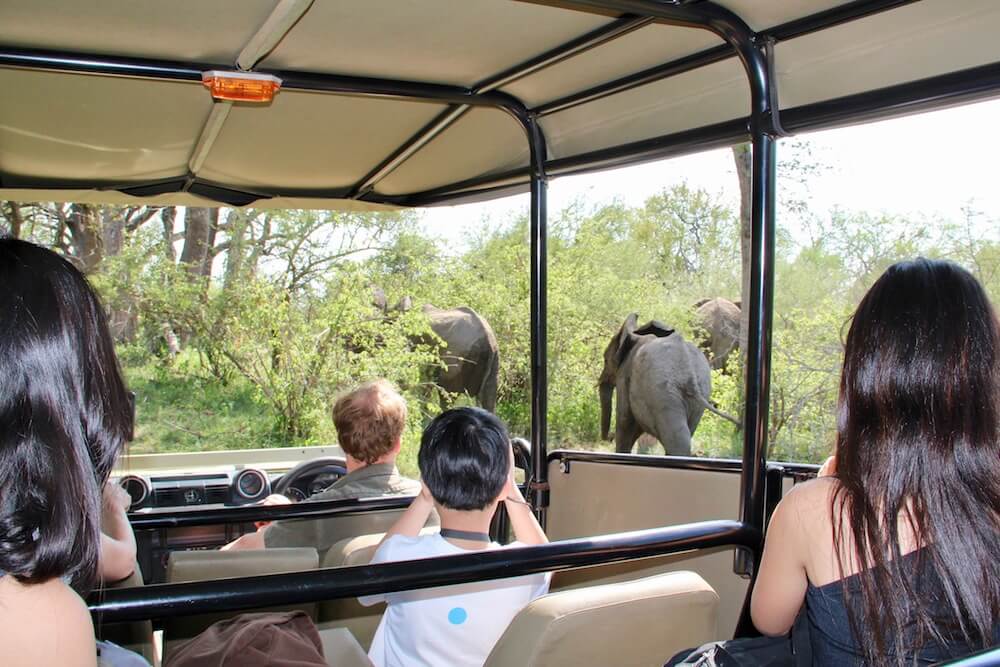
And that’s exactly what I love about going on safari in South Africa – where one can truly observe these animals in their natural habitat. There are so many stories to tell!
With plenty of patience and a sprinkling of good luck, you might be able to spot all 5 of these majestic creatures – and even get pretty close to them too. Get your cameras and binoculars ready, you’re in for an adventure!

0 Comments Add a Comment?